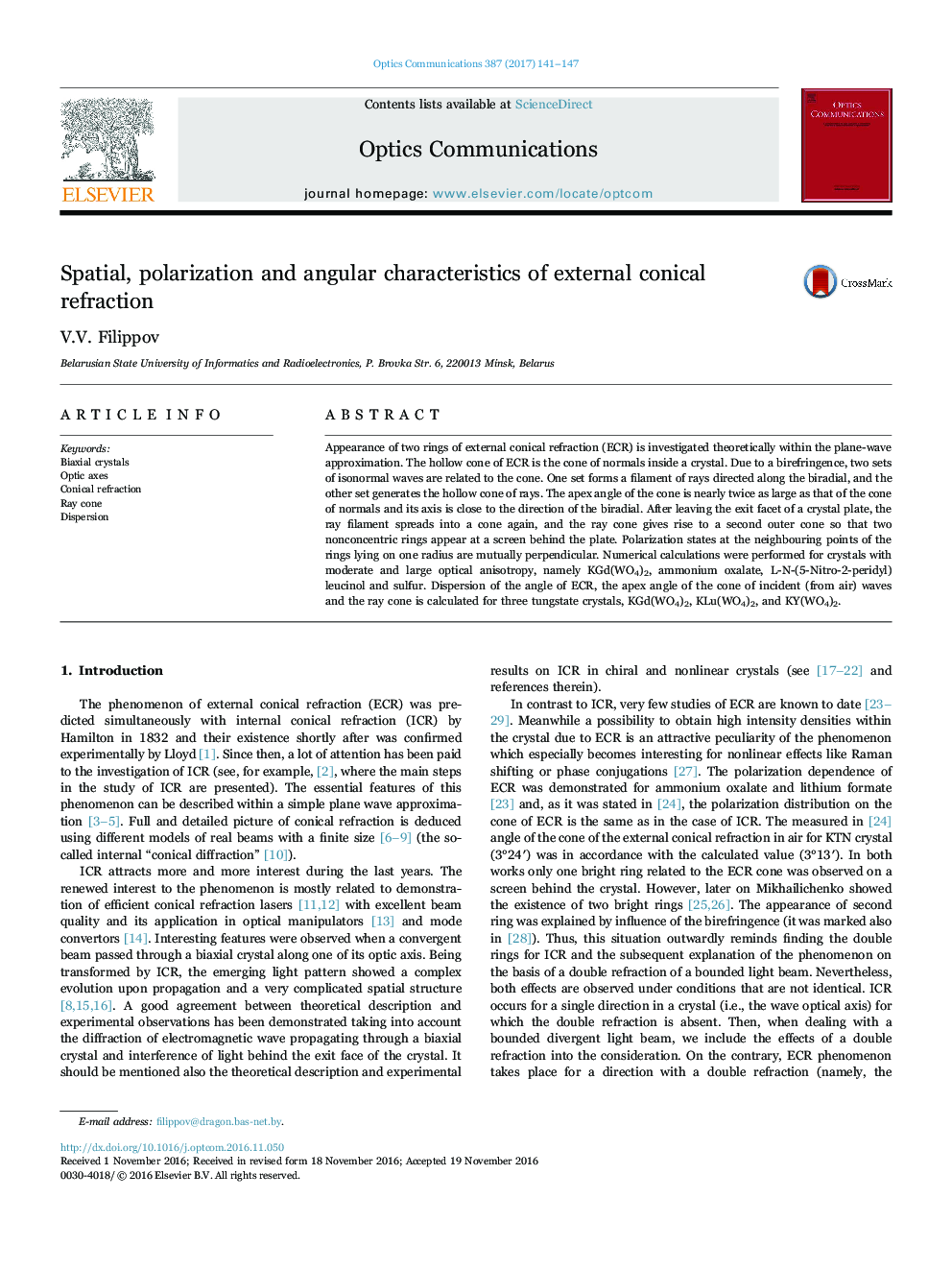| Article ID | Journal | Published Year | Pages | File Type |
|---|---|---|---|---|
| 5449674 | Optics Communications | 2017 | 7 Pages |
Abstract
Appearance of two rings of external conical refraction (ECR) is investigated theoretically within the plane-wave approximation. The hollow cone of ECR is the cone of normals inside a crystal. Due to a birefringence, two sets of isonormal waves are related to the cone. One set forms a filament of rays directed along the biradial, and the other set generates the hollow cone of rays. The apex angle of the cone is nearly twice as large as that of the cone of normals and its axis is close to the direction of the biradial. After leaving the exit facet of a crystal plate, the ray filament spreads into a cone again, and the ray cone gives rise to a second outer cone so that two nonconcentric rings appear at a screen behind the plate. Polarization states at the neighbouring points of the rings lying on one radius are mutually perpendicular. Numerical calculations were performed for crystals with moderate and large optical anisotropy, namely KGd(WO4)2, ammonium oxalate, L-N-(5-Nitro-2-peridyl)leucinol and sulfur. Dispersion of the angle of ECR, the apex angle of the cone of incident (from air) waves and the ray cone is calculated for three tungstate crystals, KGd(WO4)2, KLu(WO4)2, and KY(WO4)2.
Related Topics
Physical Sciences and Engineering
Materials Science
Electronic, Optical and Magnetic Materials
Authors
V.V. Filippov,
